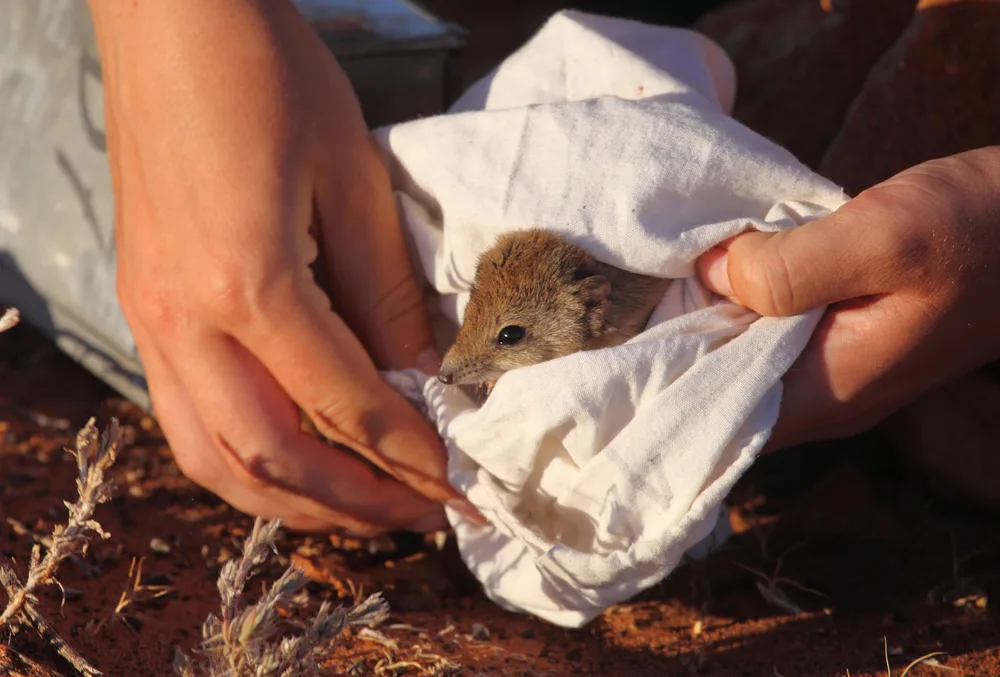Wildlife lovers, this online course is for you. Learn skills and techniques for managing wild populations. This wildlife conservation course will provide you with the foundation skills and knowledge for conserving threatened wildlife. This course covers important aspects related to wildlife conservation such as:
- habitat use, habitat fragmentation and bio geography
- genetic diversity and conserving small populations
- wildlife survey techniques
- flora survey techniques
- surveying marine life and
- working with legislation and much more.
The valuable skills obtained through the study of this wildlife conservation course could be built upon with further study. Careerline’s courses in conservation and environmental management, wildlife management, animal behaviour and landscape restoration would work well together. This course is suitable for anyone with an interest in wildlife including wildlife volunteers, carers and more.
Job opportunities in wildlife will be highly varied in the future so current students need to “think outside the box”. Our online wildlife course may deliver different things to different graduates. The following are just some of the areas where wildlife conservation opportunities may exist:
WHERE CAN THIS COURSE LEAD?
- Research and Development – in self-employment; sub contracting services, or working for an organisation.
- Wildlife Assessments – can be as varied such as conducting fauna surveys or animal behavioural assessments in the field.
- Wildlife Feeding and Nutrition
- Environmental Consultation
- Sales and Marketing – animal services and products
- Education – public education
- Tourism – ecotourism
- Business Management & Development – requires both management skills as well as a solid understanding of the wildlife industry.
- Journalism and Writing
- Wildlife conservation jobs may be found in organisations including state and federal wildlife organisations, non-government conservation organisations, academia, consulting companies, professional and scientific societies, zoos and aquariums.
With the strong foundation gained through this course, you will have a great standing for any successful career in wildlife.
Course Aims
- Develop a concept of the guiding principles of wildlife conservation and the threats to wildlife.
- Determine the principles and approaches used towards species recovery.
- Discuss the principles of habitat conservation with regards to fragmentation, restoration and the use of protected areas.
- Describe and discuss the various approaches used to conserve threatened species and ecosystems.
- Appreciate the range of flora survey techniques that have been developed to sample fauna for the purposes of conservation.
- Discuss and differentiate between fauna survey techniques that have been developed to sample fauna for the purposes of conservation.
- Demonstrate an understanding of the consequences of overexploitation. Discuss and differentiate between marine survey techniques used to conserve marine species.
- Discuss and differentiate the range of planning tools available for farming, urban and residential planning to help conserve wildlife.
- Identify various management techniques used to conserve wildlife.
- Develop a wildlife recovery plan for a species under threat.
Detailed Course Outline
Each course is made up a number of lessons or units. Each of these has self assessment questions, a set task (practical homework) and an assignment which you can upload online. Click below to read about each of the lessons and what you will learn.
There are 10 Lessons in this course:
1. Introduction to Wildlife Conservation
-
- What is wildlife conservation
- The need for wildlife conservation
- Important concepts ecology, ecosystem, biome, conservation values, biological diversity, genetic drift, habitat, life span, wildlife movement and wildlife management.
- Threatening processes habitat fragmentation, habitat degradation and loss, soil degradation, erosion, pollution, unsustainable harvesting, invasive species, climate change, population isolation and disease.
- Biodiversity indicators
- Terminology
2. Recovery of Threatened Species
-
- Loss of species categories of risk
- Species vulnerability to endangerment
- Recovery of species and threat management
- Habitat Conservation identifying critical habitat and protecting habitat
- Research population growth, habitat use and conservation genetics
- Captive breeding
- Translocation
- Public involvement
3. Habitat Conservation
-
- Habitat
- Types of Habitat eg. temperate and tropical forests, woodland, tundra and mangrove habitats
- Habitat Use
- Species Richness
- Habitat Fragmentation
- Creating Habitats
- Restoration Ecology creating habitat corridors, situating corridors, types of corridors, edge effects
- Habitat Rehabilitation implementing a land management program, determining objectives, determining a program
- The Role of GIS in Conservation
- The Role of Protected Areas levels of protection, approaches to reserve selection and limitation of reserves.
4. Approaches to Conservation of Threatened Wildlife
-
- Species Approach modelling demography, effective population size, small populations, population viability analysis (PVA)
- Landscape Approach elements of landscape ecology, distribution of populations within a landscape, landscape modelling
- Ecosystem Approach the need for ecosystem management, understanding dynamics, adaptive management, objectives for ecologically sustainable forest management.
5. Vegetation Surveys
-
- Plant Identification common names, scientific names, levels of division, botanical keys,
- Vegetation survey techniques such as quadrat surveys, landscape assessments, line surveys.
- Vegetation Mapping remote sensing data.
6. Fauna Surveys
-
- Observation techniques spotlighting, scat surveys, census techniques
- Trapping Techniques radio tracking, call recordings, pit fall traps, Elliot traps.
- Species identification
7. Marine Conservation
-
- Reef Surveys
- Habitat Surveys
- Aerial Surveys
- Overexploitation
- Commercial Fish Stock Management
8. Planning for Wildlife
-
- Farm Planning
- Urban Planning
- Use of GIS
9. Management
-
- Managing Threatened Wildlife Populations manipulating populations, revegetation/restoration, creating corridors, pest control plans, fencing for species, fire breaks.
10. Wildlife Conservation Project
-
- Project-based Learning Project
When you have completed the lessons of your Certificate course, you will be given the option of taking the optional exam. It’s okay if you don’t want the exam, we still issue your Careerline Certificate. For Advanced Certificates however, the exam is compulsory (per module) and are included in the course fee.

